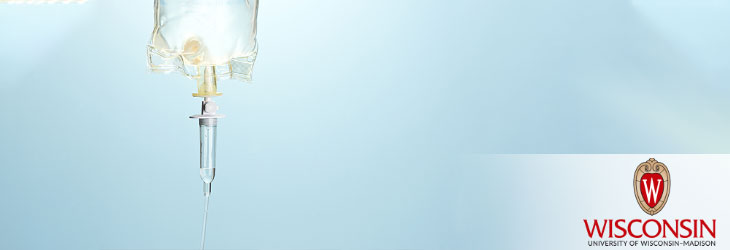Drug Delivery

Lipopeptides, Nanoparticles and Methods Of Use
WARF: P230065US02
Inventors: Shaoqin Gong, Min Zhu, Xianghui Xu
The Invention
UW-Madison researchers have developed a novel lipid nanoparticle for delivering biomolecules. The researchers designed the lipopeptide-based nanoparticle for efficient delivery of various biomolecules including plasmid DNA, messenger RNA, and CRISPR Cas9 ribonucleoprotein. They created an artificial lipopeptide, GD-LP, by linking a hydrophilic guanidinium-rich head to an oleic acid-based hydrophobic tail via a disulfide bond. This artificial lipopeptide can then form the nanoparticle with DSPE-PEG2000 through self-assembly in aqueous solution and the resulting lipid nanoparticle can form nanocomplexes with various biomolecule payloads. The disulfide bond is susceptible to degradation in the cytosol of cells, so the particle breaks down in the cell delivering its payload.
The guanidium groups on LNP form bidentate hydrogen bonds with phosphate backbone of pDNA, mRNA or single guide RNA (sgRNA) from RNP, leading to a high loading content (20 wt%). The residue guanidinium groups further interact with cell-surface anions which facilitates the cellular uptake of LNP. Once taken up by the cells, the disulfide bond present in GD-LP can be degraded in the cytosol where the concentration of glutathione (GSH) is high (2–10 mM), thereby leading to rapid release of payloads. Incorporating DSPE-PEG2000 into LNP helps to reduce the positive charge and enhance the serum stability for in vivo applications.
Additional Information
For More Information About the Inventors
Tech Fields
For current licensing status, please contact Rafael Diaz at rdiaz@warf.org or 608-960-9847